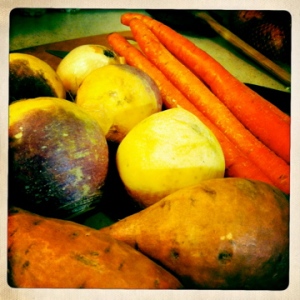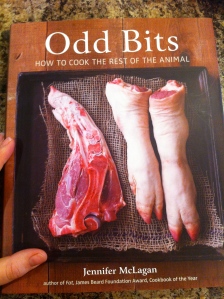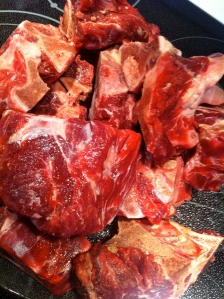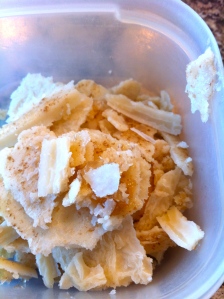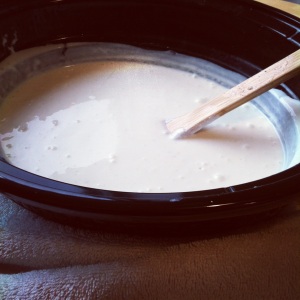Pureed soups have very few components, so the flavor benefits from being kept clean and simple. They can be pretty darn elegant and quick, freeze well, and heat up easily. A little bit more equipment is required (ie one more piece than just a pot), but it’s worth it. Eating pureed soups can be a relatively sneaky way to add a whole lot of veggies into a meal, and are a great way to highlight single vegetables that normally are relegated to the background of dishes. I generally treat them as a side dish or a light meal, depending on the heft and accompaniments. My “uhhh we have no fresh produce or leftovers” lunch is grating a yam and some fresh ginger into a can of coconut milk, cooking it while I’m in the shower, then pureeing it and throwing it in a thermos- it doesn’t have to be complicated.
Equipment
Probably the best texture for purees is created by a food mill- I’m going to go ahead and assume that you, like me, do not have a food mill. You may also not have a food processor- that is okay as well, because food processors are going to do a better job of chopping everything into little bits rather than producing a velvety texture. Which leaves us with blenders.
There’s the standard glass or plastic blenders- I operated for several years primarily off a magic bullet, and they work well with a bit of stopping and shaking (for all those college students, who always seem to have these suckers). For a glass blender, in case it isn’t obvious, do NOT put piping, bubbling hot liquids in to puree. Just don’t do that. Nobody needs exploding glass in their kitchens from an invisible little crack that was generated years before when it was bonked too hard in the sink. Let it cool a little (it can still be quite hot, just not super freaking hot), do it in batches, you should be fine- open that little vent on the top (it’s so steam doesn’t blow the lid off/build up pressure and cover you in hot liquid) and hold the lid down with a tea towel.
If your pretty serious about blending, however, and you want to make a very reasonably priced investment to ensure less dishes and more pureeing in your future, go for an immersion blender. They are easy to store, cheap, and oh em gee so much quicker than scooping liquid into a blender, then pouring it back in and blah blah blah. Seriously, I only got one recently, and that thing is amazing. I will say though, I find I have to cook the veggies to a softer point when I am blending with the immersion blender than the regular blender to get the same smooth texture- so keep that in mind.
Another useful piece of equipment for this is a strainer– just a quick run through can catch all the bits that you’ve missed. Cheesecloth will catch finer pieces; so if you’re feeling really sharp, line the strainer with some cheesecloth.
Important Components
Now you’ve got your equipment set and you are ready to go, so here are the components you are going to want to worry about when it comes to a pureed soup:
Liquid base. This is the broth, stock, coconut milk, water, and is usually flavoured with any aromatics involved in the soup, like onion, fresh ginger, leeks, spices or garlic.
Starch. The thickener of the soup, this is what gives the velvety texture and makes the soup more filling.
Stars of the show. I am going to make an assertion here, and not everyone may agree with me, but I think that a pureed soup should only have two main flavours. Most classics seem to operate on this theory, so I don’t think I’m alone here (carrot-ginger, potato-leek, cauliflower-curry). More than that, and you are going to muddle the show.
Garnish. Could be as simple as some coarse salt and pepper, a few shaving of hard cheese, a couple of walnuts, some chives, a drizzle of oil, hit of citrus, crisp bacon…you get the idea. Sometime that brings focus, usually a bit of texture, and some pop.
One thing that could be argued onto that list would be a bit of finishing cream. Usually added in a stream while blending, a few tablespoons of heavy cream can go a really long way to creating that perfect blended mouth feel. There are some soups where I always do this- mostly potato or cauliflower based ones- but I don’t think it’s absolutely essential. It’s always there as an option, but these recipes are going to be dairy free in general. The heavy cream can always be employed for a special occasion.
Texture Optimization
The largest variation in pureed soup is going to be the thickness. I’m going to be really annoying here and not give you a perfect thickness to aim for- because this is one of those things that fall into the personal preference categories. I’ve seen 4:1 and 3:1 ratios for liquid to veggies- but this all depends on what the veggie is and the starch content. I can make a pureed soup on Monday with a bag of carrots and 5 cups of water that is the perfect texture (in my opinion), and then buy a different bag on Wednesday that will need 7 cups of water to have the same effect. The best thing to do- be casual and err on the side of thicker. You can always add more liquid, but re-thickening a soup is a huge pain. Add enough liquid to cover the veggies, add more if you can’t blend it easily, and then adjust it at the end- you’ll get the hang of it pretty quickly, the only thing you can do is try.
One more thing until we combine this technique with a “recipe”- this is non-intuitive to me, and I thought it was pretty silly until I did some side-by-side comparison. Don’t cook the veggies to complete mush. They should be tender, easy to pierce with a fork but not spontaneously dissociating in the water. Why, you might say, I’m about 5 s away from giving them the ultimate mush in the blender. This brings us back to the starch content in vegetables- starch changes and gelatinizes as it is heated. We can talk about the loss of birefringence and amylose leaching, or you can just trust that things happen, and overcooked vegetables have a different structure than vegetables cooked until tender. Your puree will have a better texture and will taste better if you cook the vegetables just to tenderness. You will have the added bonus of having bright green coloured purees for green vegetables, versus their browned, overcooked counterparts.
Another thing that might seem a little obvious, but I know I’ve tried to test the limits of, is to puree this mixture while it is still hot. This, again, ties back to starch. When you cool starches you get something called retrogradation going on, which is basically the thickening and “tightening” of starch. Think of rice that is cooked perfectly tender when it is warm- cool it down and, depending on the kind of rice (parboiled is particularly bad for this due to amylopectin content), you are going to have a chewy, tough grain. So, if I take some tenderly cooked carrots, chill them, and then puree them, I’m going to have fine bits of tough granules that won’t break down with a blender. You have to reheat them to get the smooth texture desired.
Step-by-Step
I’m going to go through the technique to make a pureed soup in a step by step manner, without using any specific amount. This will give you a better idea about how to wing this whole pureed soup thing. Afterwards I’ll include the specific amounts I used.
First, figure out what you want to make. I was going to do the carrot-ginger, but you know, it’s been done. I happened to have a lot of bacon and really rich duck stock (could also have used beef, turkey, chicken, or mushroom soaking water) in the freezer, so I decided to go ultra savory on the sweet ol’ carrots, and make a smoky carrot soup. There are two stars of the show- carrots (sweet, fresh, bright) and smoky (dark, deep, medicinal). The carrots can also act as the starch because they’ve got enough going on to hold a good texture- it’s a little thinner than a potato or yam soup, which isn’t better or worse, just different.

Next is to start making the liquid base. My goal with this was to build some layers of flavor into the smoke. Caramelized onions, duck stock, whole garlic cloves, and smoked paprika I thought could be combined to make up the smoky flavor. So, I started caramelizing the onions by cooking them at a low heat and stirring only occasionally over 20 mn. In the meantime, I chopped up some carrots and peeled the garlic.

When they were starting to stick too much and had developed a brown colour, I hit the pot with some water, and stirred rapidly to detach the onions from the bottom. I was using water because the duck stock I had made was really concentrated and frozen in a muffin tin- I did equal parts stock and water to dilute the stock. I added the carrots, garlic, a couple teaspoons of smoked paprika, and my frozen stock cubes.

I threw the lid on, at an angle, and left it to gently simmer until the carrots were tender to pierce with a fork.
I used my immersion blender to blend the mixture until smooth. I added a bit of water until it was the texture I wanted. A generous sprinkle of salt and another teaspoon of smoked paprika brought the flavor together. I ladled enough for the two of us into bowls, and refrigerated the rest for lunch.
Now for the garnish- if I was going with smoky, might as well take it all the way home. I reheated a few slices of bacon I had already cooked, and crumbled them over top of each bowl (I call bacon bits “magic pork dust”- most accurate description, I think). A crack of coarse black pepper, and it’s done- a nice smooth soup with plenty of flavor for something so simple.

Smoky Carrot Soup
1 lb fresh carrots, peeled and chopped
1 Tbsp butter or bacon fat
1 onion
1 head of garlic
1-4 tsp smoked paprika
1 L stock, stock and water, or stock and mushroom soaking liquid
Salt, to taste
Extra water to thin
Bacon, cooked and crumbled
Fresh black pepper
Follow the instructions above.






